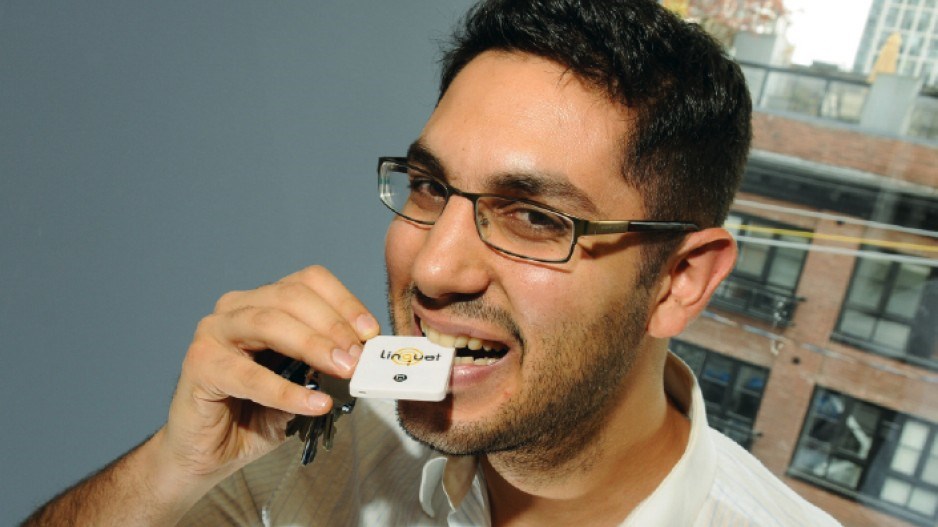Lost your smartphone? You can always use the Find My iPhone app – or applications like it – to trace it, lock it and, if necessary, wipe it clean. You may never get it back, however.
Vancouver entrepreneur Pooya Kazerouni has launched a new loss-prevention device called Linquet that prevents people from losing their phone – or keys or wallet – in the first place.
The wafer-thin device uses Bluetooth to create an invisible lanyard linking it to your smartphone.
Clip it to your keys or insert in your wallet, purse or child’s pocket, and whenever it is separated from your smartphone by 10 to 20 metres or more, it will sound an alarm on both the Linquet and your smartphone.
Walk away without your phone, your Linquet key tag goes off; walk away without your keys, your smartphone’s Linquet app sounds an alarm. And when you have to separate the devices or part from your child, the app can easily be switched off.
“I’ve had this idea for 10 years, but up until two or three years ago we were not able to pull it off,” said Kazerouni. “But now everybody is carrying these magical devices – smartphones.”
Roughly 4.3% of smartphone owners lose their devices, said Nick Murray, CEO of Mobsafety, a Vancouver startup that makes smartphone-tracing apps.
“Security as a whole is paramount,” he said. “We use our devices now for banking, communicating; it’s our camera now. It’s such a valuable device that we really can’t afford to lose it or have it stolen.”
Murray’s company is one of several that make apps that can trace and lock lost or stolen smartphones. Linquet adds an additional layer of security by preventing the phone from being lost in the first place, but it also can be used to prevent the loss of other valuable, like keys, wallets, backpacks – virtually anything that can carry a Linquet wafer, including toddlers.
“How many times have you heard, ‘I just looked away for three seconds, and he was gone?’” Kazerouni said.
Because it continues to sound an alarm when the tether is broken, the Linquet can alert a parent when his or her child runs off in a shopping mall, and the sound can be used to help trace the child.
Kazerouni said Linquet faced several technical hurdles in its development. Bluetooth is notorious for draining battery power, so the first iterations of the device had to be charged every day, and the app sucked a lot of juice from the smartphone. Initially, only one Linquet could be tethered to a smartphone app.
But Kazerouni said the Linquet team developed hardware and software that fixed both problems. The Linquet can now go a week without having to be recharged, and subscribers can use up to five of the devices.
Each Linquet would cost $85 to $100 if bought outright, but Kazerouni decided that would be a barrier to adoption, so the Linquets are given away for free. Activating them costs $3 per month. There are no fixed-term contracts.
“I’m an Amazon kind of guy,” Kazerouni said. “I don’t want to make money off margins – I want to make money off volume.”
Although Linquet is still beta mode, there is already a two-month backlog in orders. This week, Kazerouni plans to publicly launch the Linquet Android app. An iPhone app is in the works.




